A Local Breed: NGT6 "Leoliner" in focus
Morning all (just)!
Aside from matters of infrastructure and practical application of operating regulations, I should also like to provide outlines of our rolling stock inventory, amended by personal impressions from actual driving. This is what I'd like to start doing in today's posting, commencing with what as of now is – though only by a narrow margin over the NGT12 – my favourite type from our inventory!
Approximately fifteen years ago, LVB were evaluating options for renewing the company's tram stock within a minimum time span while at the same time keeping procurement expenses low, which at the time did not appear feasible if trams from larger producers such as Siemens or Bombardier were to be obtained. Furthermore, one key consideration was that local development and assembly skills should be exploited to as large an extent as possible to that end.
One suggestion which initially appeared to hold a lot of promise was to heavily refurbish a significant numbers of Tatra T4D and B4D cars which had not yet been treated such. This would have offered the option of continuing to use the original bogies – already adapted to our unique gauge of 1,458 mm (4 ft 9 19/32 in) – with massively modified bodywork set atop. As proof of concept, one demonstrator was rebuilt from non-modernised T4D car 1808. This car, which was renumbered various times, was referred to as NFTW4 and initially utilised as a departmental service car, designated 5050. In 2009, it was further modified to also serve as a rail grinder car, now designated 5092. In that role, it can be used in a back-to-back formation with our second rail grinder and OHLE inspection car, 5091, which has retained the original T4D body with a few modifications such as a glazed rooftop dome.
Eventually, it was concluded that a mere refurbishment of existing T4Ds would not yield the kind of tram needed for traffic requirements such as they had developed by that time, as a result of which LVB subsidiary Leipziger Fahrzeugbau were contracted for a more extensive project with the goal of developing and building a six-axle articulated tram with a mixed configuration of low and high floor passenger areas. Less than one year later, two prototypes were rolled out, designated 1301 and 1302, and commenced testing in December 2003.

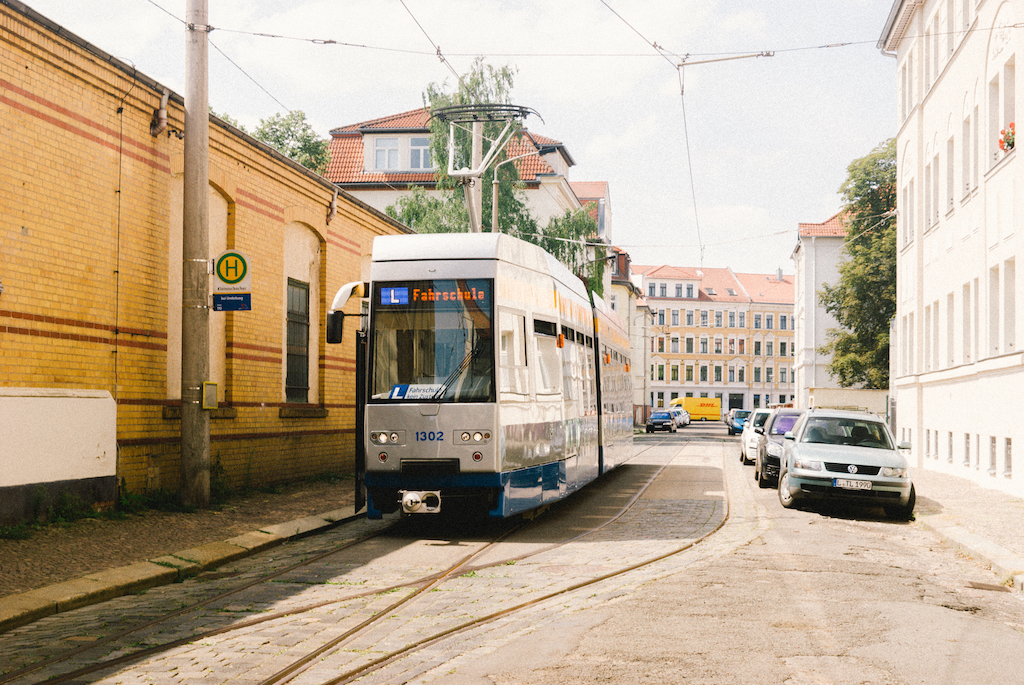
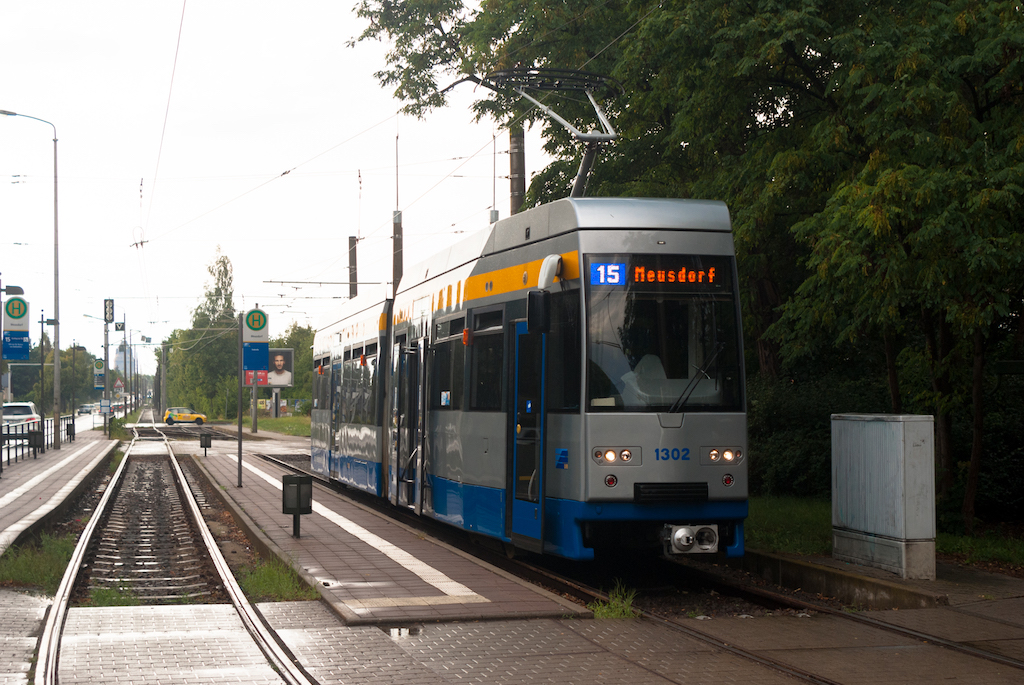

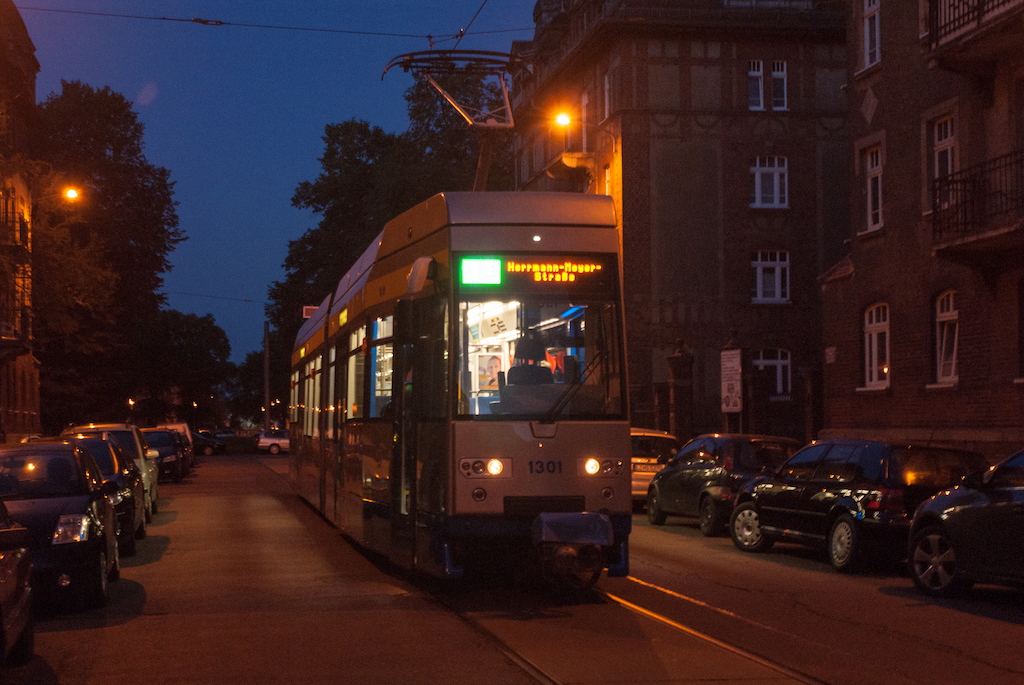
Both prototypes remain in service and as part of their recent revisions were – where possible – "approximated" to the production cars. Most visibly, 1301 and 1302 now have coloured LED destination signs at the fronts.
As built, 1301 and 1302 were configured with conducting couplers which could feed traction current from the first car to the second, allowing the second car to run with the pantograph down – mirroring the practice from the T4Ds. This capability but was later deleted, and not implemented on the production cars either. Also as part of their revision, 1302 was outfitted with a purely mechanical coupler on the front end and 1301 with one on the rear end, so that multiple working is now possible only with 1302 leading. The prototypes but are most commonly working singly, and are most frequently booked onto Line 14.
As the prototypes were configured with bodies 2.30 metres wide from top to underframe skirts, they were initially restricted to working those routes already adapted with platforms matching 2.30 metre wide bodies as opposed to the earlier standard of 2.20 metres. They were mainly booked onto Lines 11 and 11E, but with all platforms now having been adapted for 2.30 metres, they may now be used across the entire network.
The production cars were ordered in two batches in late 2004 and June 2009 for a total number of 48, and comprised various modifications. Most visibly, the front and rear ends were redesigned and the couplers modified to be folded in and concealed by a swing-up valance when not in use. Furthermore, the swing doors were replaced with plug doors. The cab control desk was heavily modified as well and various modifications applied to the passenger spaces also.

1306 "Lindenau" on Turn 1442 at Plagwitz Station
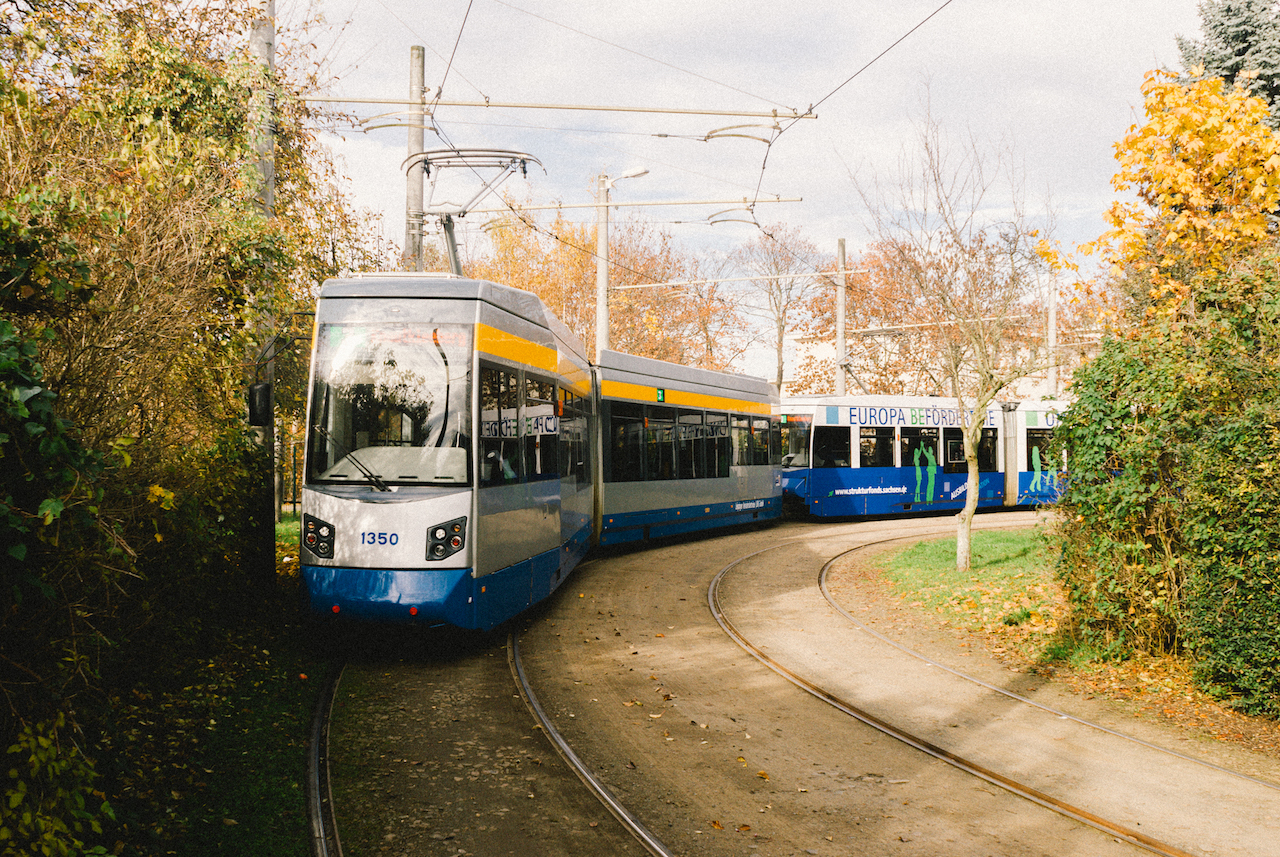
1350 "Heiterblick" and 1305 "Sellerhausen" in the Gerhard-Ellrodt-Straße loop in Großzschocher which currently is Line 3's southern terminus due to extensive engineering work, scheduled to continue till 5 December.
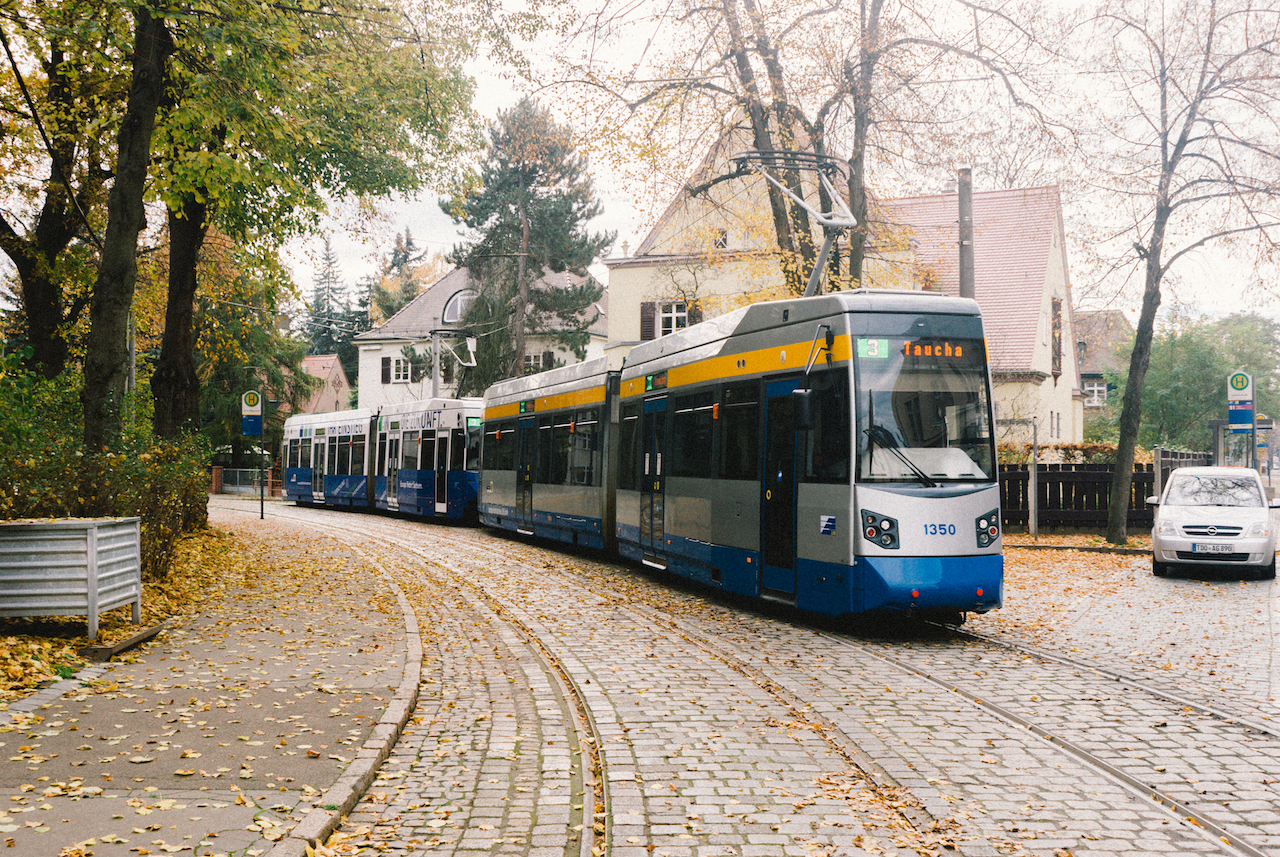
And in Taucha – a town of about 14,800 immediately northeast of Leipzig – after the next upbound trip. At present, all NGT6s not thus equipped yet are being refitted with LED daytime running lights, with this refit being carried out as part of scheduled revisions.
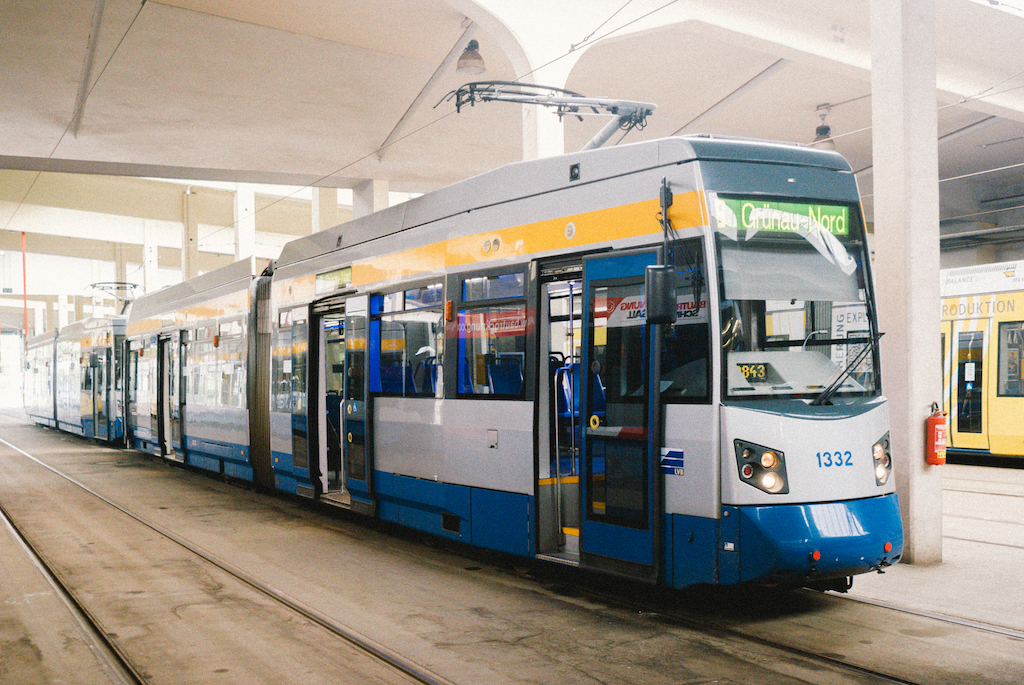
1332 "Leutzsch" upon preparation for sortie onto Line 8 at Angerbrücke Depot.
Interior impressions:
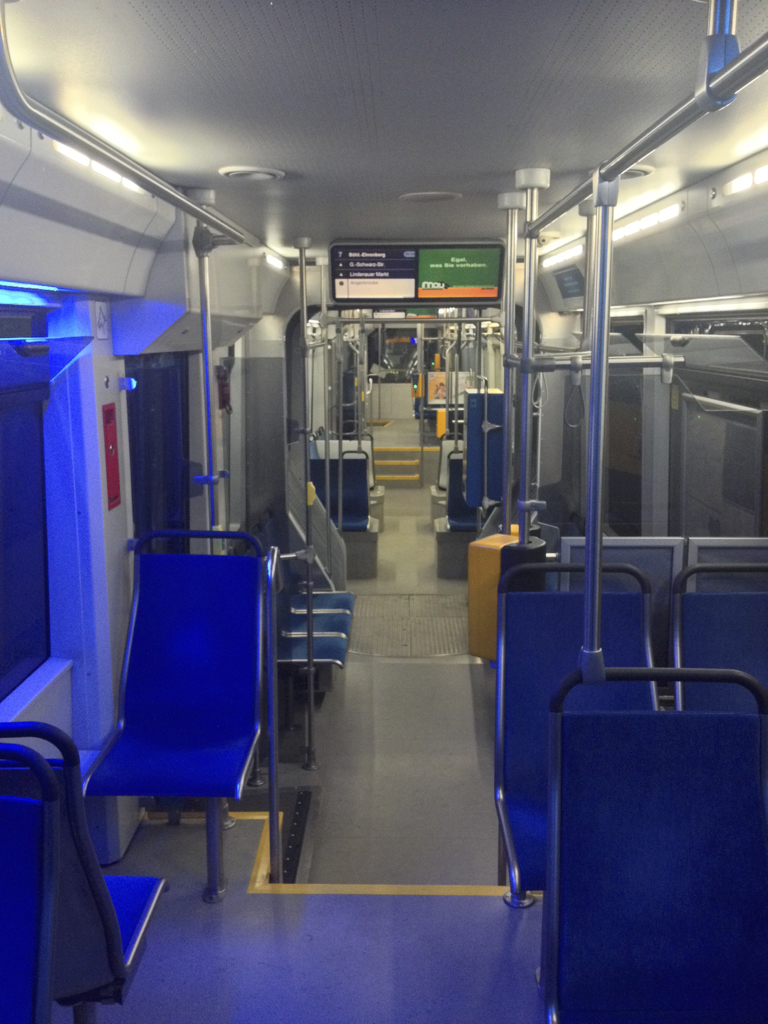

Most crucial for me as a driver, the cab on the production cars in particular is, to my mind, well laid out and clearly structured, with buttons and switches which I think are robust and pleasant to touch. The controller handle, set for the left hand as is common on modern trams from German builders, is particularly nice.
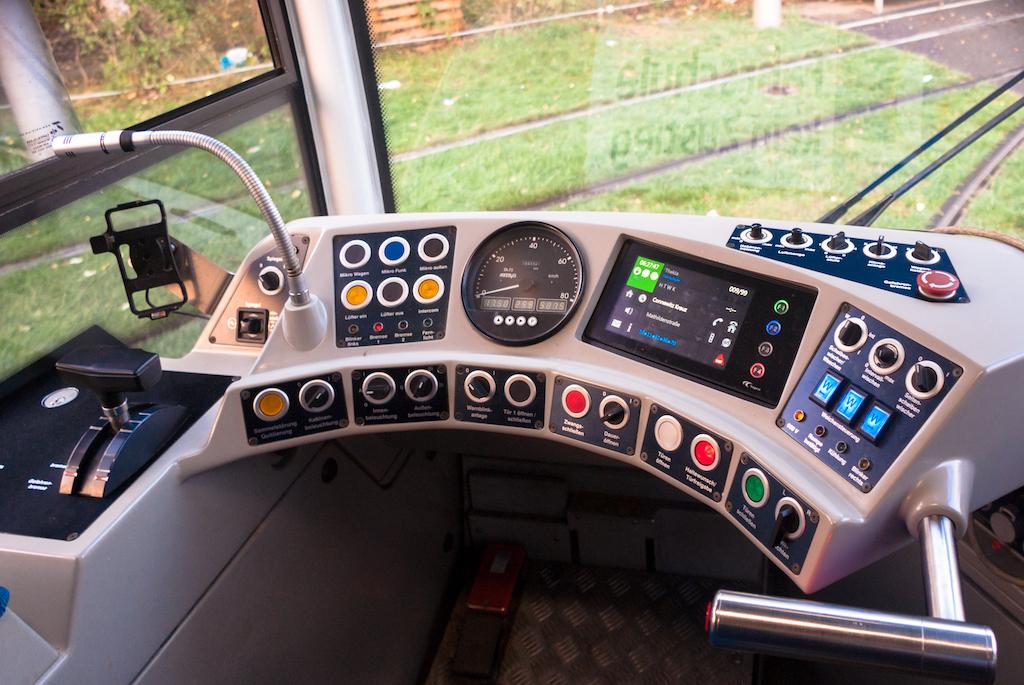
To the left of the controller handle and left ahead are the reverser switch and the activation key lock. The controller handle as such has one neutral notch, one notch each for minimum power and braking force respectively, and one notch for emergency braking, just below maximum regular braking force. Aside from that, power and brake regulation is completely notchless.
One thing I particularly like about the NGT6 is that you are sat fairly high – roughly at the roof height of a normal automobile – and have excellent vision on the route.
The L-shaped aluminium handle set for the right hand is what we also call the "Static Balancer" and contains five buttons itself. These are, the bell trigger set for the right thumb on the handle's left end; tertiary deadman switch; track brake; sander; and headlight flasher. It is recommended to rest your right hand on or near the handle so as to be able to quickly trigger any of the buttons previously mentioned. –
Having mentioned the tertiary deadman switch, the principal deadman switch is the pedal which you can see to the left in the footwell; while the controller handle itself can also be depressed and is the secondary deadman switch. Either of these three switches must be continuously depressed while the car is in motion. The footplate on which the deadman pedal is set can be adjusted in height.
The ITCS terminal – specifically, the Intelligent Touch Terminal device by Swiss producer Trapeze – is set to the right of the speedometer. These terminals were installed during the summer this year, and are interacted with through a touch screen, so anyone who has handled a smartphone or tablet computer should not have any problems working with these terminals. There continue to be software updates with fairly high frequency at this time.
And, just to pick up on my earlier posting on pointwork and point signalling, there is one detail in this photo also meriting separate attention. These would be the three blue buttons on the right of the instrument plane, which are for point setting.
Scheduled turns generally utilise the line and turn information from the ITCS terminal for point setting, but if necessary, you can override this information by way of these buttons. This could be necessary for diversions but is also required for depot sortie and return services – which have route information provided only for that part of their path from the location where they have entered their regular route – as well as empty stock or departmental services, neither of which operate with programmed routes.
Aside from this instrument panel, there also is a secondary instrument plane to the bottom right of the primary, one corner of which you can see just at the lower right of this photo. This panel mainly contains buttons for pantograph operation, battery activation, safety relay, and several lidded and sealed activation buttons for critical functions like door locking control override. These you may only activate after obtaining permission from Control. The CCTV monitor is also set in this secondary instrument panel.
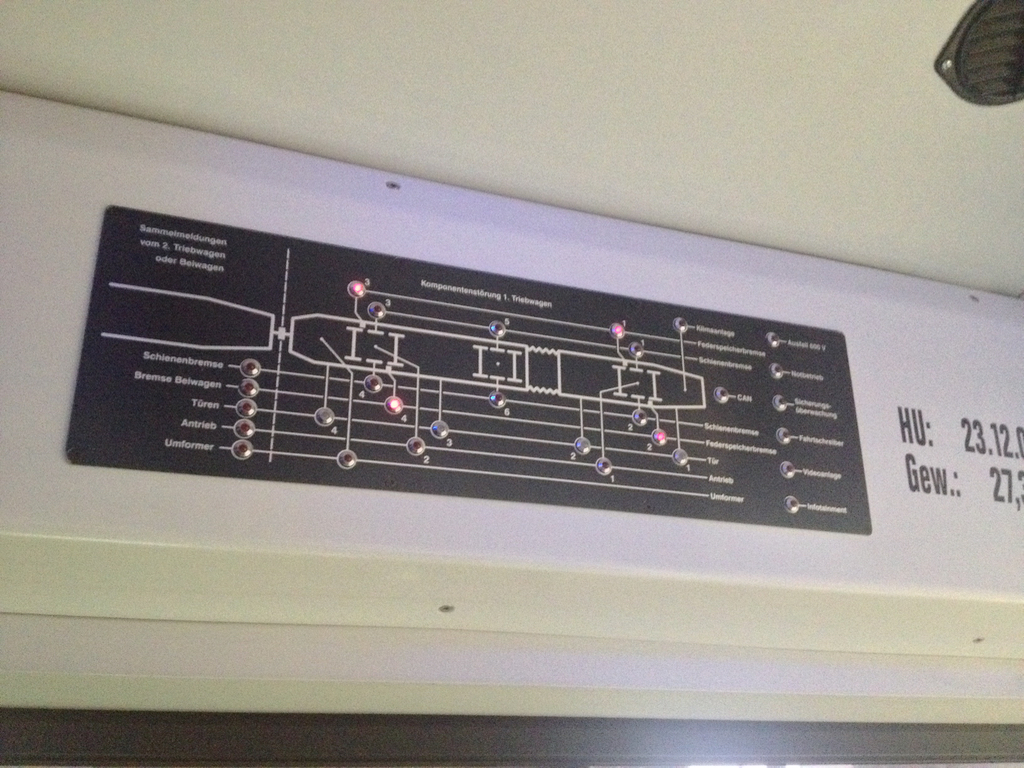
This would be the error reporting panel, set to the top left of the driver's position and once again, laid out simply and clearly with LED indicators. As the car had been stationary when I took this photo, the indicators for the holding brakes are lit, and thus do not report any malfunction in this case!
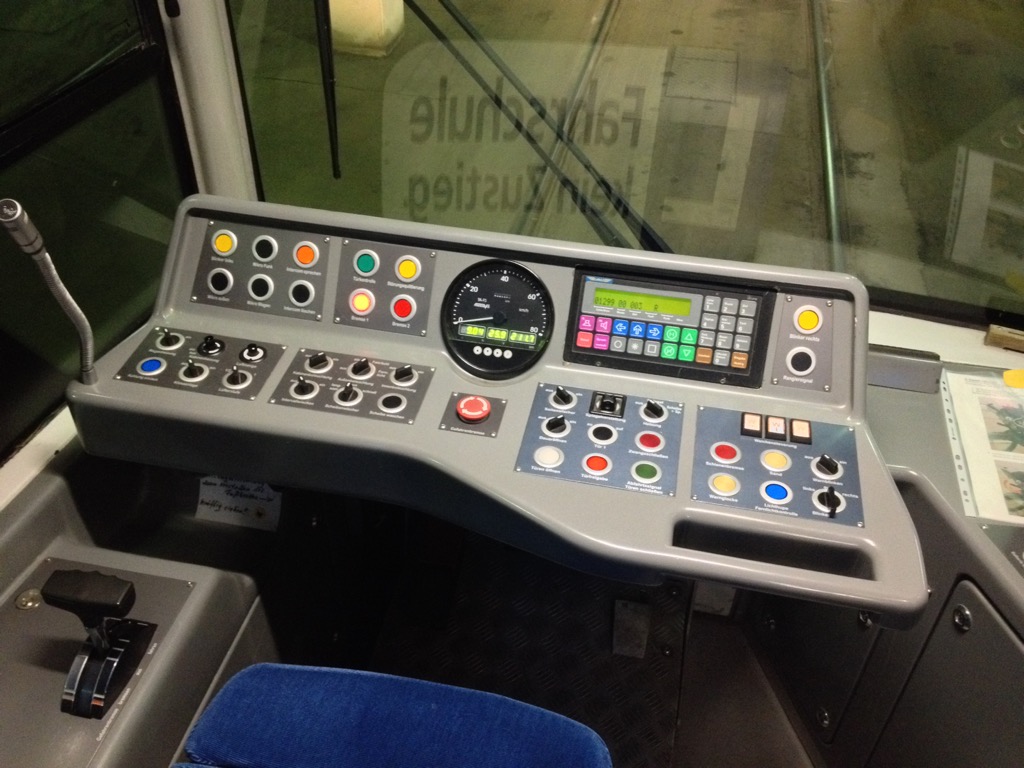
Quite different in appearance, this would be the control panel on the prototypes. I took this photo during one of our training turns, at which time the prototypes still had the old ITCS terminals. These have since been replaced by the ITT units:
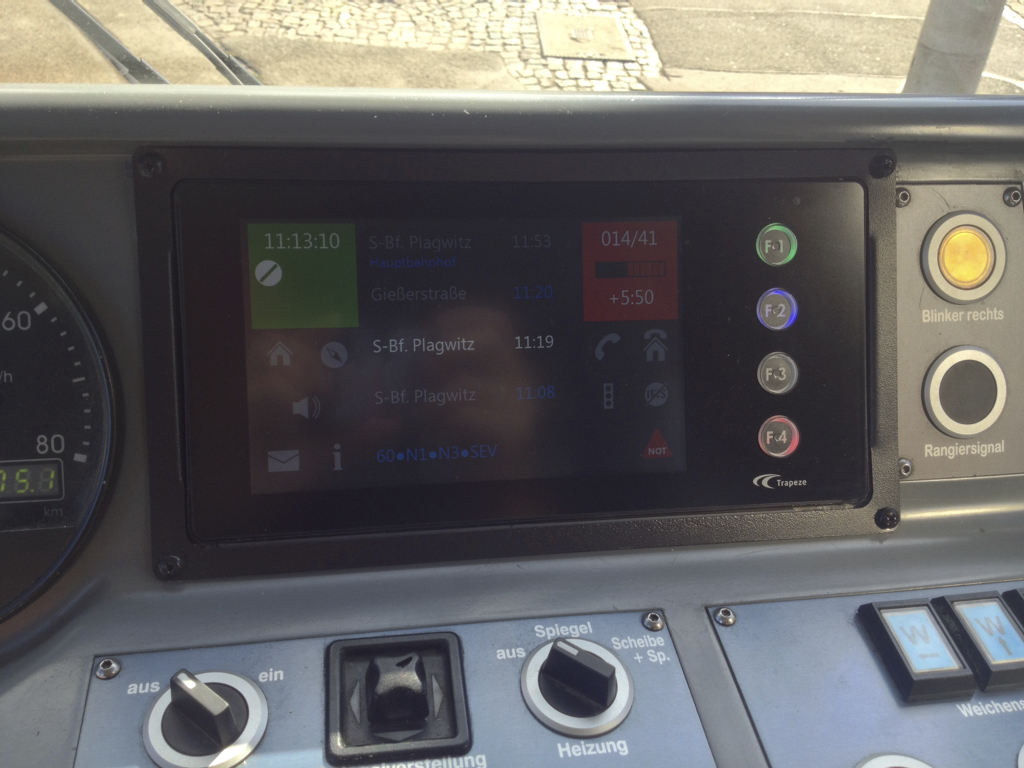
I will write a few comments on these devices at a later time!
One key difference still present on the prototypes is that the controller handle is set much lower than on the production cars, although the original, ball-shaped handle has long been replaced with the T-shaped handle from the production variant.
The NGT6's principal characteristics are as follows:
Overall body length – 22.59 m; 23.10 with extended couplers
Overall width – 2.30 m
Empty service weight – 27.3 tonnes
Maximum service weight – 40.5 tonnes
Passenger capacity – 39 seated, 79 standing at four persons per square metre
Minimum curve radius – 16 metres
Low floor area – 60% of total
Power output – 260 kW/349 hp
Wheel arrangement – Bo'2'Bo'
Wheelbase – 1.90 m for motor bogies, 1.60 m for trailer bogie
Wheel diameter, new/maximum wear – 700/635 mm for motor bogies; 550/500 mm for trailer bogie
Gear ratio – 1 / 8.7039
Maximum track braking force per shoe – 70 kN for motor bogies; 55 kN for trailer bogie

The motor bogies are very similar in design to those on the T4Ds, with inside wheelset bearings and longitudinal traction motors set side by side near the bogie centre. Of course, the NGT6 utilises asynchronous AC traction motors as opposed to DC motors with separate stator excitation. The holding brake is designed with brake disks clasped by callipers. As on all contemporary German trams, the dynamic brake constitutes the primary braking system, with the track brakes applying only in emergency stops initiated by the driver, and in severely poor adhesion conditions while braking.
The trailer bogie, set immediately behind the body articulation joint, has only a pair of track brakes but no service or holding brake of any kind.
The NGT6 is equipped with cab air conditioning units only, and conventional ventilators and heating units for the passenger space. The traction and auxiliary inverter package is set on the rooftop above the rear motor bogie, utilising IGBT components.
From my point of view, the propulsion control system, provided by Vossloh Kiepe, is where the NGT6 shines most brightly. I personally can hardly imagine a setup allowing for even more precise power and brake control, and in fact, the controls are configured so well that in my impression, each millimetre of additional motion on the controller handle corresponds exactly to that millimetre in effect. The controls also allow for excellent creep control, which can be useful in dense traffic, restricted speed zones, depots, or reversing loops.
I admit that there are situations where in my opinion, the NGT6 could do with a bit more motor power, though I'm hearing a software update currently being installed on these cars apparently makes them more agile, and also improves adhesion properties in autumnal and wintry driving conditions. That being said, I always enjoy driving tthe NGT6, and I personally certainly do not agree with those who claim it was a "cheapo" design. It is, I think, cost-efficient, but to my mind, that is a different concept entirely.
And for a closing note, I should like to point you towards HeiterBlick's product file on the NGT6: http://www.lfb.de/downloads/pdf/LeoLiner_deutsch.pdf, and in English: http://www.lfb.de/downloads/pdf/LeoLiner_english.pdf
-
 1
1




0 Comments
Recommended Comments
There are no comments to display.
Create an account or sign in to comment
You need to be a member in order to leave a comment
Create an account
Sign up for a new account in our community. It's easy!
Register a new accountSign in
Already have an account? Sign in here.
Sign In Now